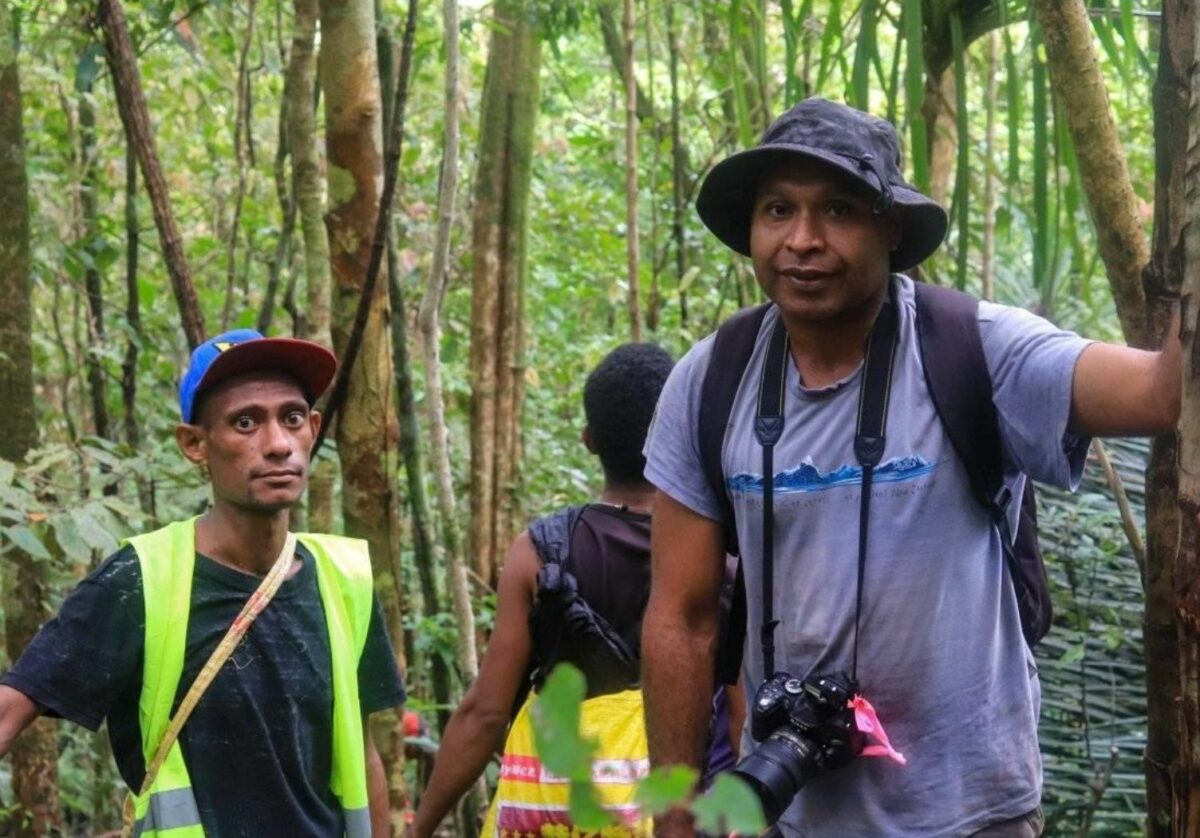International Day of Forests – Dr. Chris Dahl
This international Day of Forests we hear from Dr. Chris Dahl
Dr. Dhal is a researcher at the National Agriculture Research Institute Papua New Guinea. You can find out more about his tiny frog discovery here.
Today we’re hearing from him about the importance of including local rainforest communities in forest conservation and the use of technology. So without further a do, over to Dr Chris Dahl.
From traditional garamut to the use of technology, revealing the importance of forest conservation by a tribal community in Papua New Guinea.
In Papua New Guinea (PNG), traditional methods of communication vary across thousands of tribes. For generations, the garamut (carved out of hardwood trees) also known as a slit drum, the song beat is the voice, echoing misty mountains, virgin rainforest and rivers, meandering a thousand different ways.
Somewhere towards the tip of PNG lies East Cape, Milne Bay Province.
Garamut is an idiophone that transformed the tribal forest communities striving into present technology, coupled with contemporary land-use flora and fauna conservation. Contemporary conservation favours cultural participation by tribal chiefs with clan members.


Dr Chris Dahl (left) and Cool Earth Biodiversity Officer Jack Joseph Kostolo (right). Wabumari, Milne Bay.
Cool Earth’s journey with PNG meant top conservation inclusion at all levels. On visits to the Wabumari Conservation Area, Clifford Yaee, Cool Earth’s Forest Monitoring Coordinator, Nicky Roma, Biodiversity officer and fellow officers took me to the conservation boundary. Nicky showed me wildlife tracks, and as we continued into the forest he took from inside his bag a GPS device. He acknowledged the training he had received, first, on camera traps for recording wildlife, second, on using GPS to demarcate forest boundaries for conservation.
I picture myself working with parataxanomists (professionals with local knowledge and training in taxonomy science). Nicky has a formal education and a wealth of traditional knowledge, trained to use innovative technology to perform ecological studies for forest conservation. Nicky is an expert, he knows wildlife monitoring techniques, technology use, mobile apps, and gps, to collect precise biodiversity data.
We established botany study plots, engaged elders, and youths (including women and girls), strengthened ethnobotany (the study of the traditional and cultural uses of plants), and transferred traditional knowledge.
Wabumari forest conservation is where forest is a supermarket on shelves shopping.
Hunting, food, water, and building materials are few on one’s shopping list. Deep forest connection has cultural value that has been passed on to the next and today wholeheartedly skilled in arts and crafts. This is apparent in Pandanus leaf mats woven by Wabumari women.
The Cool Earth and PNG partnership cements international networks, valuing forest and ecosystem services. Each milestone has its moment of pride, we stand to protect our forests, its rewards are sustainably embedded alongside capacity building, livelihood, lifestyle and innovative technology that informs the future of our children.
